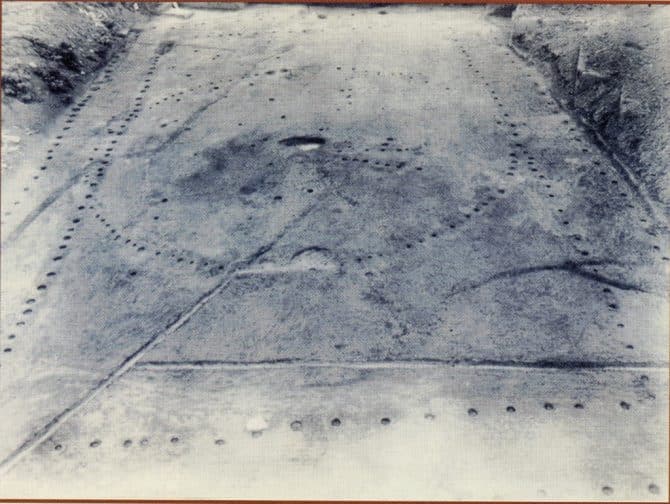If you grew up on a farm in rural Northern Kentucky, you may have seen prehistoric stone artifacts that were churned up out of the earth by a plow prior to planting. We are fascinated with prehistoric peoples and their ways of life, and burial mounds are no exception. Mounds are quite common in the region and can be found throughout many Northern Kentucky and Southeast Ohio counties. With the help of archaeology, we have gotten to take a peek back in time into the daily life of the peoples who inhabited the region prior to European settlement.
One of the many cultural groups that had a prehistoric presence in the Ohio Valley region was the Fort Ancient, believed to be an offshoot of the widespread Mississippian culture that dominated the Midwest and Southeast United States. The Fort Ancients lived in the region during the Late Prehistoric Period between 1000-1750 CE. Fort Ancient habitation sites are divided into three temporal spans (3):
- Fort Ancient prior to 1200 CE
- Middle Fort Ancient 1200-1400 CE
- Fort Ancient after 1400 CE
They lived in small villages and relied on farming to cultivate most of their food, but also engaged in hunting, fishing, and gathering of wild plants (3). Fort Ancients organized their societies differently than the Mississippians, which is why we find fewer mounds of Fort Ancient origin (3) than Mississippian. Though the Fort Ancient were not the only ones, they were the most recent to build mounds in this region.
Most notably, the Fort Ancients are known for their construction of the Alligator Mound in Licking County, Ohio and their modification of the Serpent Mound in Adams County, Ohio. Mound building may have served a number of functions for the Native Americans, including protection, observation, shelter, in addition ceremonial or sacrificial purposes and burials. While several prehistoric Native American cultures buried their dead in earthen mounds, the Fort Ancient did not always do so. Neither the Serpent Mound nor Alligator Mound contain burials, and probably served a ritualistic or ceremonial purpose for the Fort Ancients.
A list of reported mounds from around Kentucky–including Boone, Campbell, Gallatin, and Pendleton counties–was compiled by W. S. Webb and W. D. Funkhouser in 1928. Since then, the field of archaeology has uncovered some of the secrets of the mounds, determining who built them and speculating as to the purposes they served. It is thought that mound building among the Fort Ancients only last for about 150 years, as noted by Henderson (2).
The mounds were just one part of the plazas inhabited by the Fort Ancients. In Boone County, Kentucky, eight late Fort Ancient villages have been identified that date to around 1400 to 1600 CE (2). In Boone County, the remains discovered under one of two Middle Fort Ancient mounds near Mud Lick Creek illustrate daily life in the prehistoric Ohio Valley. Cleek-McCabe is one mound near the Mud Lick Creek, circular in nature, and it contained a mound which held beneath it three structures, evidenced by the holes where wooden poles had rotted away (3). The two outer structures were rectangular in shape, and encased a smaller round structure (3). Within them archaeologists found the remains of hearths, limestone slabs, fired earth, and burials (3). It has been suggested that these structures may have been charnel houses (3).
The village of Mud Lick Creek, and the Cleek-McCabe burial mound, illustrates how Fort Ancient settlements were structured. Habitation sites were focused around a central plaza, ranging anywhere from 80 to 250 feet in diameter (2). Activities would have been focused in the centers of these plazas, with a zone designated burials just outside of the main area (2). Just beyond the cemetery people built their houses, and disposed of any unwanted materials on the periphery of the plaza (2). In the case of Cleek-McCabe, the burial mound was built on the edge of the main plaza and contained within it 21 individual skeletons (2).
While Boone county has a number of Fort Ancient sites, so to do many other counties in Kentucky and Ohio. Interested in more resources on the archaeology of Fort Ancient habitation sites and mounds? We have a wealth of early and recent resources that will surely satisfy your curiosity.
Library resources on the Fort Ancients and Mound Builders
- First Farmers of the Middle Ohio Valley : Fort Ancient Societies, A.D. 1000-1670by C. Wesley Cowan
- The Prehistoric Farmers of Boone County, Kentucky by Gwynn Henderson*
- Kentucky Archaeology edited by R. Barry Lewis*
- Indian Mounds of the Middle Ohio Valley: A Guide to Mounds and Earthworks of the Adena, Hopewell, Cole, and Fort Ancient People by Susan L. Woodward and Jerry N. McDonald
- Ancient Life in Kentucky by W. D. Funkhouser and W. S. Webb
- The Prehistoric Men of Kentucky: a History of What is Known of Their Lives and Habits, Together with a Description of Their Implements and Other Relics and of the Tumuli Which Have Earned for Them the Designation of Mound Builders; a Paper Prepared to Commemorate the Silver Anniversary of the Filson Club by Colonel Bennett H. Young
*Only available for use within the library.






Add a comment to: The Fort Ancient Mound Builders of Northern Kentucky